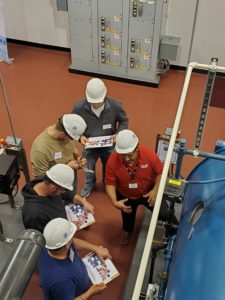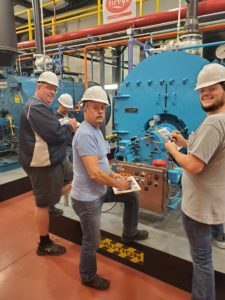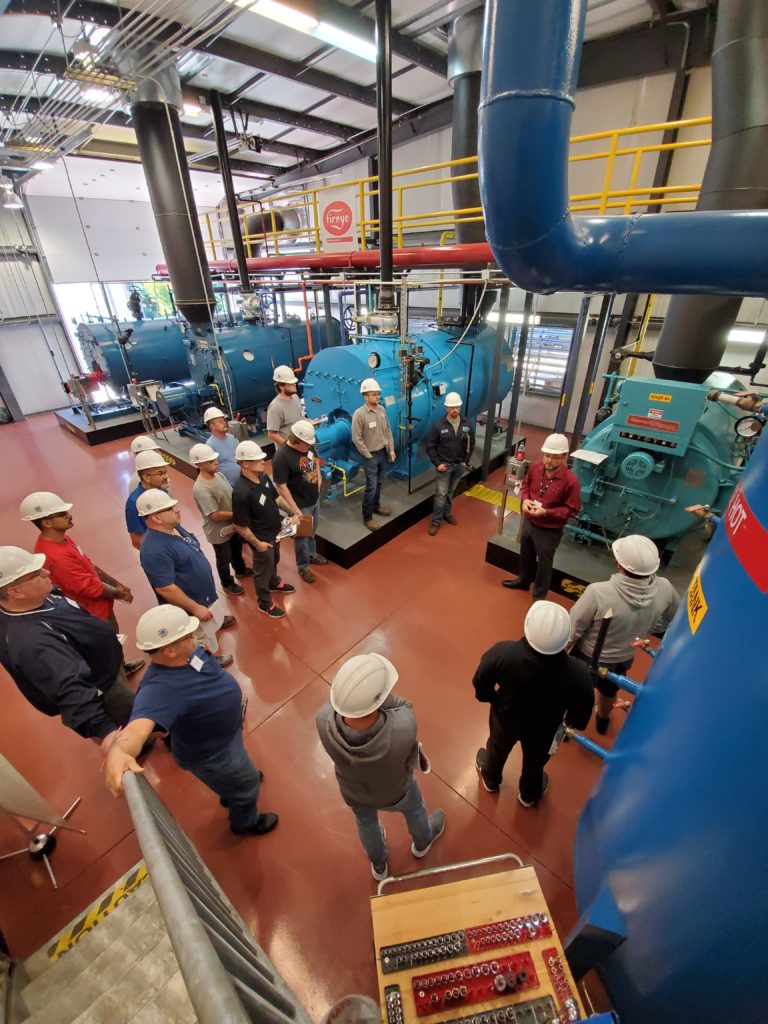 As you face ever-increasing challenges to train your operators and get the most from your training investments; we’re ready to help you meet those demands. Randy Williams (President of GCAP) believes that the implementation of an effective training program is one of the the most important steps that an employer can take to enhance employee safety. With hands-on evaluations and employee involvement; our training processes are tailored to target specific plant needs. In order to maintain safe operation and dependable service while bringing a boiler system on or offline, certain steps need to be followed. The steps vary depending on whether the system is hot or cold. A cold boiler system is one in which the entire piping system and the boiler are cold or at ambient temperature.
As you face ever-increasing challenges to train your operators and get the most from your training investments; we’re ready to help you meet those demands. Randy Williams (President of GCAP) believes that the implementation of an effective training program is one of the the most important steps that an employer can take to enhance employee safety. With hands-on evaluations and employee involvement; our training processes are tailored to target specific plant needs. In order to maintain safe operation and dependable service while bringing a boiler system on or offline, certain steps need to be followed. The steps vary depending on whether the system is hot or cold. A cold boiler system is one in which the entire piping system and the boiler are cold or at ambient temperature.
GCAP’s Boiler #1 Start-up Procedure
 Boiler #1 is a High-Pressure Boiler. This Procedure SHALL be adhered to during Start-Up and Operation of GCAP’s Boiler #1. The Steps outlined in this Procedure are in place to ensure the SAFE Start-Up and Operation of said equipment. This procedure was written to ensure Safe Operation of Equipment @GCAP and was not designed to supersede any Procedures in place at YOUR facility.
Boiler #1 is a High-Pressure Boiler. This Procedure SHALL be adhered to during Start-Up and Operation of GCAP’s Boiler #1. The Steps outlined in this Procedure are in place to ensure the SAFE Start-Up and Operation of said equipment. This procedure was written to ensure Safe Operation of Equipment @GCAP and was not designed to supersede any Procedures in place at YOUR facility.
- Perform a visual inspection of the Boiler. Ensure all inspection covers are in place. Look for any water leaks. Notify an Instructor of anything that appears abnormal.
- Ensure ALL Bottom Blow-Down Valves are CLOSED. Valve #35 & #36.
- Visually VERIFY the Water Level in the Boiler by observing the level in the Gauge Glass. The Water Level in the Boiler Should be slightly below the NOWL to allow room for expansion as the Water is heated up.
- Verify the Setting of the Boilers High Limit Switch. #3. DO NOT exceed 50psig when setting the High Limit Switch.
- Verify the House Gas Pressure and record on GCAP Log Sheet. House Pressure gauge is located in the Northwest Corner of the Boiler Lab. Valve Tag #113
- SLOWLY Open 1st Gas Valve on Gas Train. Valve #34.
- SLOWLY Open 2nd Gas Valve on Gas Train. Valve #25.
- SLOWLY Open 3rd Gas Valve on Gas Train. Valve #32.
- Ensure Louvers on North wall of Boiler Lab are open. All Boilers MUST have an adequate supply of Make-Up Air to support Combustion.
- SLOWLY Open Valve #26 to perform a column blow-down. Upon completion of column blow-down record the temperature of the boiler water by taking a temp on the bottom of the supply line from the Boiler that feeds the Column. Record Time and Temperature on GCAP Boiler Warm Up Log.
- Verify NO MANUAL RESETS are tripped on the Boiler. IF ANY Manual Resets are tripped, LOG the condition on the GCAP Boiler Room Log.
- RESET any Manual Resets that are tripped on the Boiler. Manual Resets that need checked are Low-Gas Pressure Switch #28, High-Gas Pressure Switch #871, ALWCO #13 and High Limit Switch #3.
- OPEN the Vent on the Boiler. Valve #12.
- Ensure the Boiler is in MANUAL MODE and in LOW-FIRE. START the Boiler.
- PERFORM a check of ALL CRITICAL Safeties on the Boiler. Notify an Instructor of any Safeties that ARE NOT OPERATIONAL.
- Continue Running Boiler in Manual and Low-Fire until Temperature of Boiler water is increased by 50° Refer to Step 10 of this Procedure to check Water Temp of Boiler. When the Water Temp of the Boiler has increased by 50°F SHUT THE BOILER OFF. Record Time and Water Temp of Boiler at time of Shut-Down on GCAP Boiler Warm Up Log.
- Leave Boiler TURNED OFF for 15 minutes to allow for EVEN Heating and Expansion of Boiler Internals.
- AFTER 15 minutes RE-START the Boiler in MANUAL and LOW-FIRE.
- Perform a Blow-down of the Boiler Sight Glass. SLOWLY Open the Sight Glass Blow-down Valve #8. Upon completion of Sight Glass blow-down OBSERVE how quickly the Sight Glass refills. If the Sight Glass takes too long to refill this could be a sign of scaling inside of the column piping.
- Repeat Steps 16 through 18 of this Procedure until the Boiler water reaches 212°
- Once the Pressure inside the Boiler reaches 10psig CLOSE the Vent. Valve #12.
- At this point the Boiler may be transitioned to Automatic Controls.
- Continue Monitoring Boiler Operation to ensure Safe and Efficient Operation.


